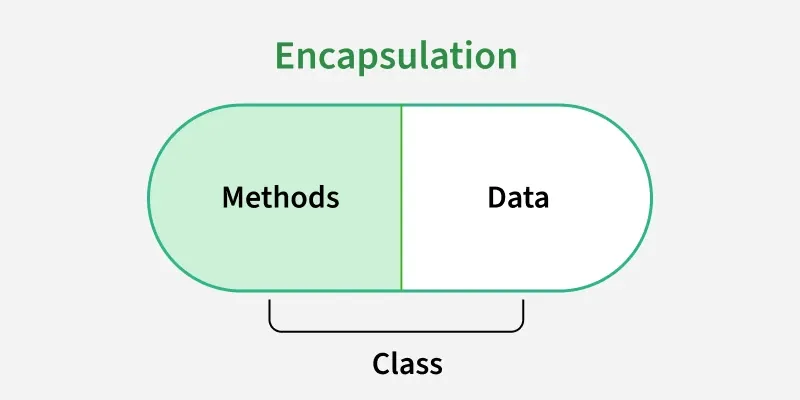Encapsulation is one of the core concepts of Object Oriented Programming (OOP). The idea of encapsulation is to bind the data members and methods into a single unit. .
- A class can hide the implementation part and discloses only the functionalities required by other classes. By making class data and methods private, representations or implementations can later be changed without impacting the codes that uses this class.
- It helps in better maintainability, readability and usability. It also helps maintain data integrity by allowing validation and control over the values assigned to variables.

Implementation of Encapsulation in C++
- Declare variables as private: Keep the class data members private so that they cannot be accessed directly from outside the class. This ensures data hiding.
- Use getters and setters: Provide public functions (getters and setters) to access and modify private variables safely. These methods can also include validation to ensure only valid data is assigned.
- Apply proper access specifiers: Use private for data members to hide information and public for member functions that provide controlled access to the data.
C++
#include <iostream>
#include <string>
using namespace std;
// Class representing a Programmer
class Programmer
{
private:
string name; // Private variable
public:
// Getter method to access the private data
string getName()
{
return name;
}
// Setter method to modify the private data
void setName(string newName)
{
name = newName;
}
};
int main()
{
Programmer p;
p.setName("Geek"); // Set the name
cout << "Name=> " << p.getName() << endl; // Get the name
return 0;
}
Explanation: In the above example, we use the encapsulation and use getter (getName) and setter (setName) method which are used to show and modify the private data. This encapsulation mechanism protects the internal state of the Programmer object and allows for better control and flexibility in how the name attribute is accessed and modified.
Best Practices for Encapsulation
- Make class data private to hide implementation details and reduce coupling.
- Use getter and setter functions instead of public fields to control access.
- Ensure only valid values are assigned to private variables.
- Do not provide setters for data that should not be modified externally (e.g., IDs).
Advantages of Encapsulation:
- Data Hiding: Encapsulation restricts direct access to private class variables, protecting sensitive data from unauthorized access.
- Improved Maintainability: You can change the internal implementation of a class without affecting code that uses the class.
- Enhanced Security: Encapsulation allows validation and control over data in setter methods, preventing invalid or harmful values.
- Code Reusability: Encapsulated classes can be reused in different programs without exposing internal details.
- Better Modularity: Encapsulation keeps data and methods together in a class, promoting organized and modular code.
Disadvantages of Encapsulation:
- Increased Code Complexity: Writing getter and setter functions for each variable can make the code longer and slightly more complex.
- Performance Overhead: Accessing private data through functions instead of directly can add a small performance cost.
- Less Flexibility in Some Cases: Restricting access too much may limit how other classes can extend or use the class efficiently.
